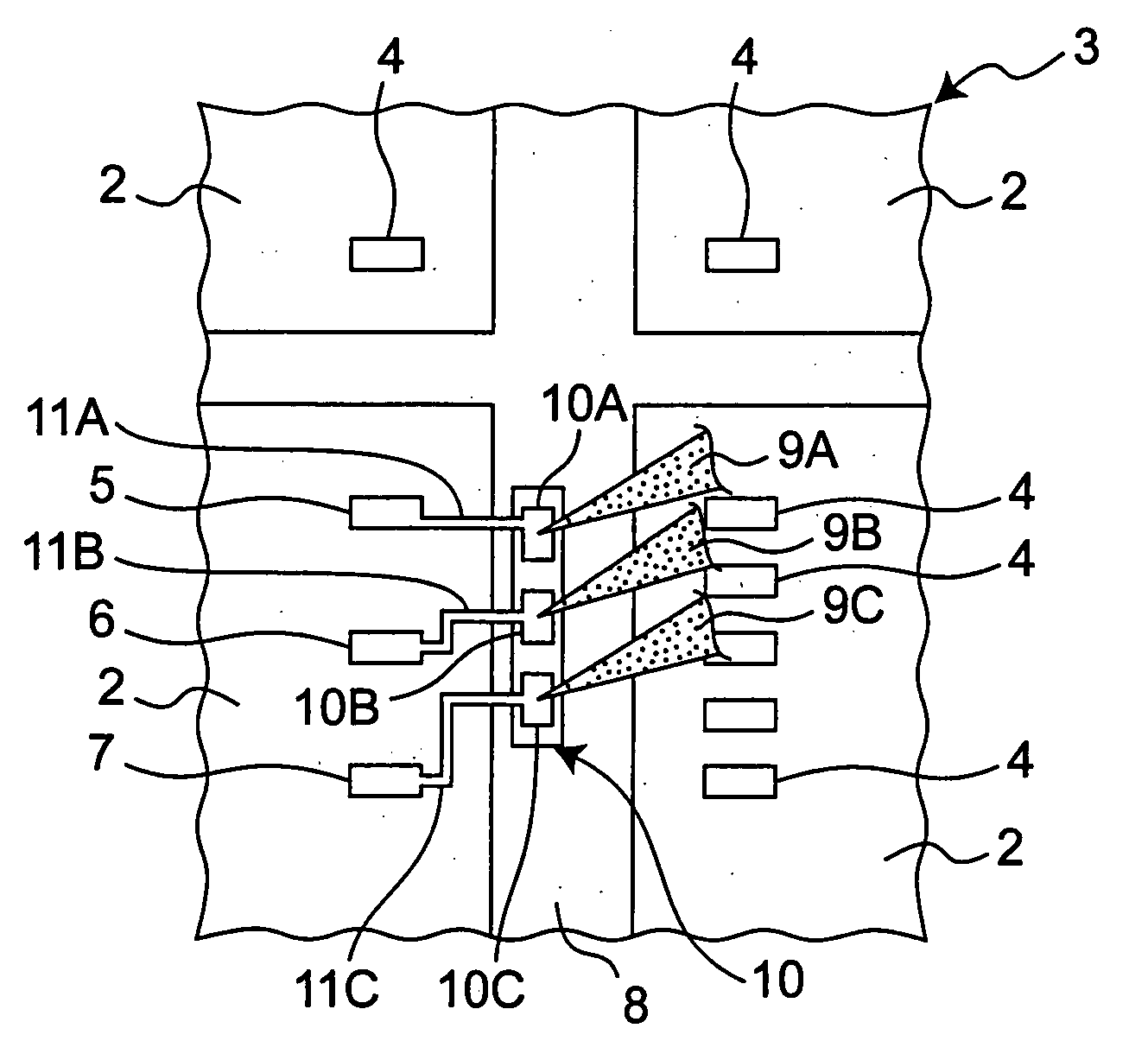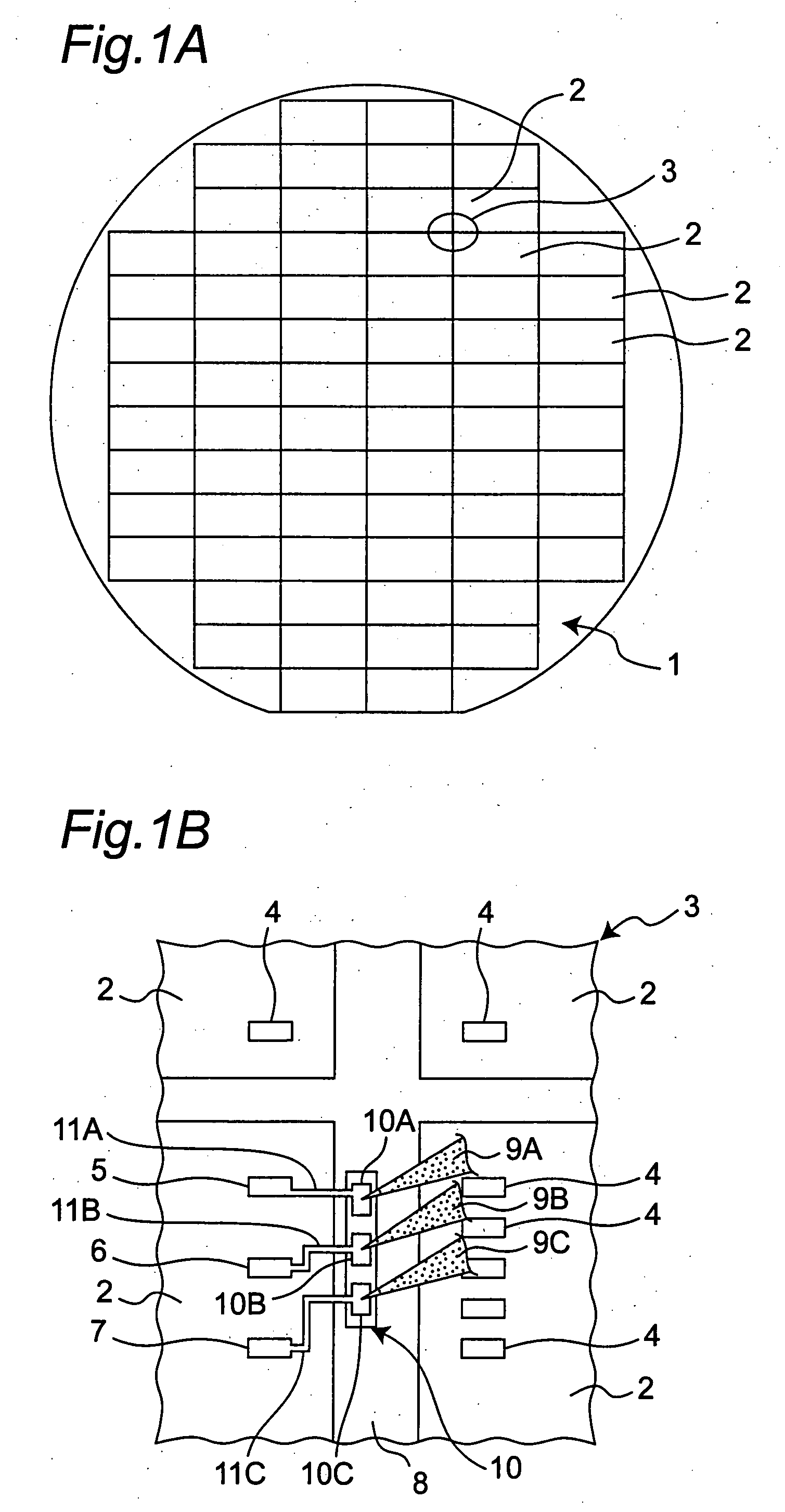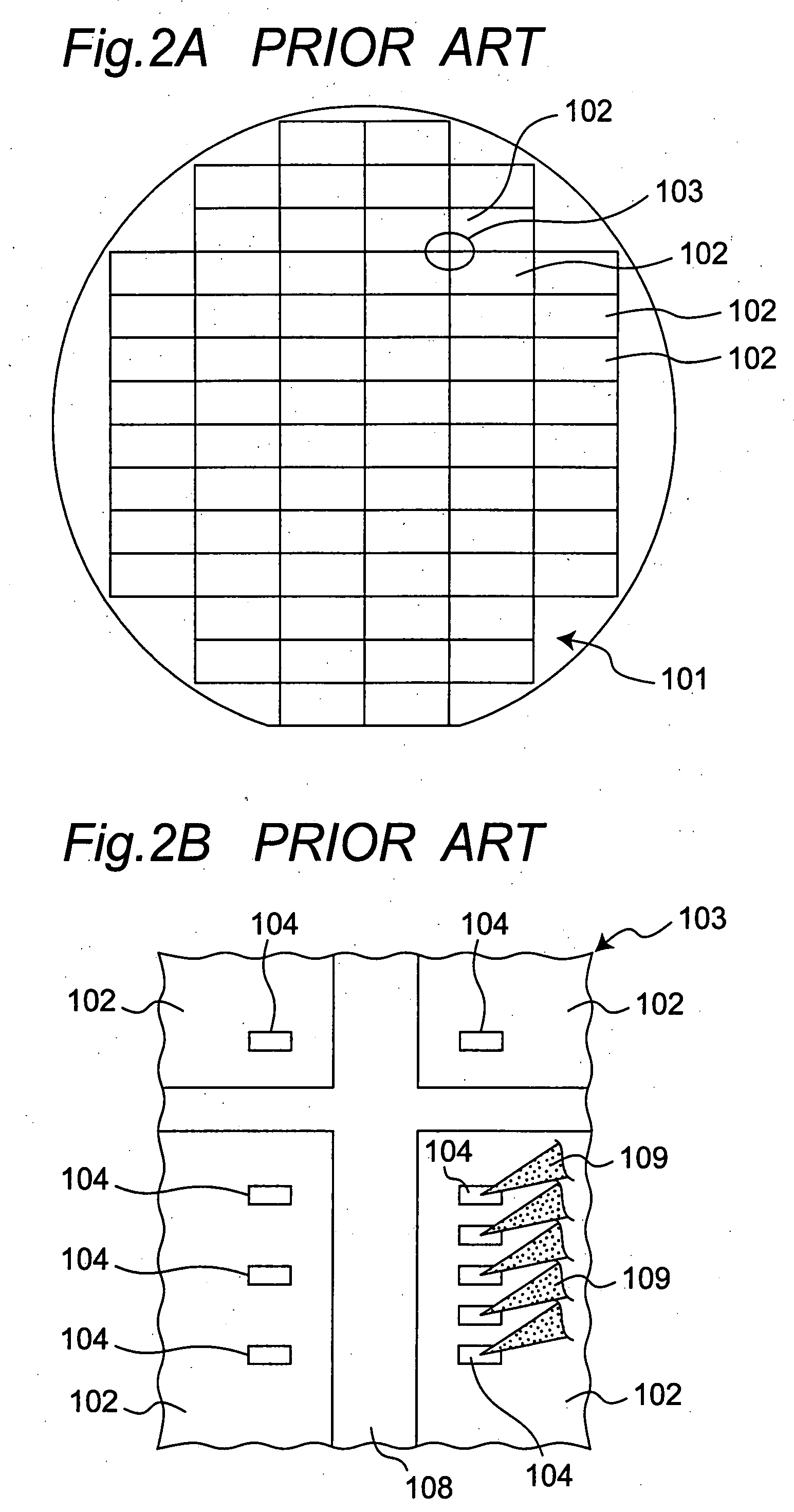Wafer and semiconductor device testing method
- Summary
- Abstract
- Description
- Claims
- Application Information
AI Technical Summary
Benefits of technology
Problems solved by technology
Method used
Image
Examples
Embodiment Construction
[0042] The present invention will be described in detail below by the embodiment shown in the drawings.
[0043]FIG. 1A shows the schematic construction of a wafer 1 according to one embodiment of the present invention. The wafer 1 has undergone a wafer process, and the wafer surface is segmented into a plurality of rectangular regions (referred to as “chip regions”) 2 as in a general wafer. A semiconductor device (not shown) is fabricated in each of the chip regions 2.
[0044]FIG. 1B shows a part of FIG. 1A, i.e., a portion 3 where corner portions of four chip regions 2 gather. As shown in FIG. 1B, the chip regions 2 are partitioned by a scribe line (also referred to as a dicing line) 8 that has a certain width between the chip regions. It is noted that the wafer 1 is segmented into chips along the scribe line 8 after finishing a wafer test described later. A plurality of pads 4 for inputting and outputting signals between the elements in the chip regions and the outside are arranged ...
PUM
 Login to View More
Login to View More Abstract
Description
Claims
Application Information
 Login to View More
Login to View More - R&D
- Intellectual Property
- Life Sciences
- Materials
- Tech Scout
- Unparalleled Data Quality
- Higher Quality Content
- 60% Fewer Hallucinations
Browse by: Latest US Patents, China's latest patents, Technical Efficacy Thesaurus, Application Domain, Technology Topic, Popular Technical Reports.
© 2025 PatSnap. All rights reserved.Legal|Privacy policy|Modern Slavery Act Transparency Statement|Sitemap|About US| Contact US: help@patsnap.com



